
Login
X
- Home
- About Us
- Courses
- Graduation
- Diploma Certificate
- Professional Diploma
- Special sessions / Aptitude boost up
- News & Events
- Student zone
- Placement
- Gallery
- FAQ
- Contact Us

Interior design portfolio
An interior design portfolio is a collection of visual representations that showcase past and current interior design projects, similar to a resume. An outstanding portfolio showcases why an individual should be selected to join a team of designers or hired by a company. An interior design portfolio highlights an interior designer’s personality and planning abilities. A portfolio usually showcases an individual’s style, fashion sense, and creative processes through imagery rather than words, as it contains more pictures than text.
Important steps to make an interior design portfolio
Whether you want to work for an established firm or go it alone, you must show that you are a skilled and competent professional who can be relied on to produce quality work.
Craft an attractive introduction
It is critical to include an introduction in your portfolio. It aims to give readers a clear understanding of who you are and what you hope to achieve in your career. Consider writing a brief biography highlighting your educational background, design philosophy, and exceptional interior design skills. This introduction will establish the tone for the rest of your portfolio.
Select and add design samples
Next, choose a variety of samples that demonstrate your best qualities and abilities as an interior designer. The setup of the samples can be something other than client projects, as you can include renderings, drawings, color swatches, and other exciting content. What is crucial is that the samples you choose represent the business image and design style you want to convey to forecasts.
Organize your design samples
One of the most thought-provoking facets of making a creative portfolio is unifying your work correctly. Creating your book apparent and scannable will help readers navigate your portfolio and discover what’s closest to their interests.
Update your portfolio
As an interior designer, you are continuously embryonic; let your interior design portfolio replicate that! Add new projects as they are completed. And get rid of any older ones that have become out of date. It’s also critical to keep your portfolio current with industry trends.
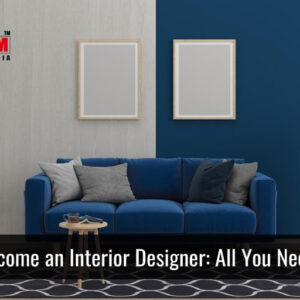
You must be wondering how to become an interior designer? Suppose you plan to make your career in interior designing and need clarification about how it matches you and will offer good job options in the future. Here comes the right guide to help to know about an interior designing program and its career prospects.
Interior designing is the planning, designing, and implementation of architectural interiors. The interior space of a building must be designed by a professional interior designer who comprehends interior architecture. If you have the drive and imagination to design commercial and residential spaces, interior design is a great career choice. It offers a chance for a global career and the freedom to practice independently.
The best interior design schools in India provide thorough undergraduate and graduate interior design programs to those interested. Having the appropriate credentials in interior design could help you start a successful career. To obtain the necessary education, training, and abilities for the position, you can pursue a B.Sc. in Interior Designing as an undergraduate degree and then an M.Sc. in Design Space as a postgraduate degree. You can also look at some colleges’ interior design diploma programs. Even if you start your own interior design business, having legitimate credentials from one of India’s top interior design universities is always preferable. Your clients would feel more comfortable hiring you if you had these credentials when designing or renovating their space.
Numerous opportunities are available to candidates who have successfully attained the required qualifications in interior design. They are employable as lighting designers, aesthetic merchandisers, production designers, art directors, exhibition designers, and interior and spatial designers. Additionally, they can start their own interior design business and work with various clients. It is important for interior designers to stay up-to-date on the latest trends since the industry is highly competitive.
Woohoo!! Now you got an idea for how to become an interior designer? So, don’t wait!! Grab your seats from the top interior design college.
Visual communication that blends words, images, and ideas to convey information to the audience is known as graphic design. Visual communication and communication design are other names for graphic design. Graphic design career produce visual responses to your life.
The websites you browse, the commercials you see, the movies you watch, the games you play, and the packaging and logos of the goods you purchase are all the work of graphic designers. While it’s not always possible to teach someone how to have a good eye for design, most graphic designers have gone to art or design school to advance in their graphic design career.
Publishers, design firms, advertising agencies, and other industries that require skilled designers may also hire graphic designers. The majority of designers are able to complete post-graduate or bachelor’s degree programmes, which aid in their technical skill development and enable them to build portfolios of their work that can help them find jobs more quickly after graduation.
Many businesses, including those in advertising, printing, web design, etc., are in need of graphic designers. Tools like Photoshop, Gimp, Flash, Dreamweaver, Fireworks, Illustrator, Blend, and more should be familiar to new designers. But a designer’s career slows down a little after three to four years of experience. Designing requires more individual creativity than a collaborative effort. Improving your skills would greatly benefit your graphic design career.
The compensation of a designer becomes stagnant at a level of INR 4–5 lacs per year after gaining valuable professional expertise for about 6 years. However, with the development of the internet, there is a significant opportunity for freelance designing for numerous clients even when employed by a single organisation. On websites like Instagram, WordPress, Blogger, etc., you can also design, manage, and run your own campaigns to generate extra income from clicks, likes, and visitors.
In recent years, there have been an unprecedented number of graphic design courses. Graphic designers have a plethora of opportunities in the digital world.
You only need to select the educational programme that best matches your present design abilities and graphic design career growth objectives.
It may be necessary for you to enrol in numerous courses that cover various aspects of graphic design, including principles of graphic design, professional logo design, identity design, publishing design, managing digital design projects, and visual communication.
You can consider enrolling in courses that provide more in-depth instruction in the creative process and its practical application in graphic design once you have a basic understanding of design and have learned certain important design abilities.
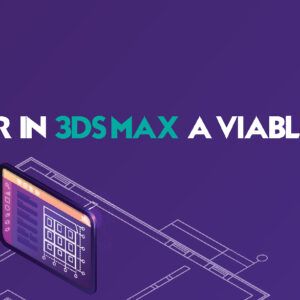
3ds Max is a fantastic computer graphics software for creating 3D digital photos, 3 Dimensional models, and animations. It is a very widely used software among 3D artists because the capabilities available in it are remarkable. Career opportunities in 3ds max are numerous. For professional training in 3ds max, many institutes offer fantastic training courses. After completing this professional program, several Career opportunities in 3ds max wait aspirants.
3ds max is essentially a crucial aspect of someone’s life who works in the production of games and movies. It is used by professionals and features a versatile plug-in facility only available on the Windows platform. So, let’s take a look at the various Career opportunities in 3ds max.

Video game designers build the essential aspects of video games to make them more engaging and exciting. To make the characters and locations more appealing and realistic to the viewer, video game designers use 3ds Max design and modeling.

A 3D designer is responsible for materializing conceptions, including representations of locations, people, and things, by investigating ideas and addressing potential difficulties or flaws with the designs and one-dimensional graphics. A 3D designer can also enhance their models to create market-ready products.

A 3D animator makes animations that are three-dimensional and may be utilized in films, motion pictures, television programs, and other applications. Some 3D animators specialize in specific sorts of animation, such as creating objects, individuals, or backdrops, but others take a broader approach and make animations of all kinds.

A 3D printing technician prepares data for 3D printing and ensures that the equipment functions correctly to deliver a successful prototype or product. Because 3D printing has become such an essential part of the 3D modeling and design industry, many people who choose to work in this profession will need to be familiar with 3D printing technology and equipment.

A web developer designs and builds websites for a company or a group of clients. They utilize 3D design concepts since many modern websites incorporate three-dimensional graphics and representations to provide users with a more engaging experience.

An architectural designer collaborates with architects and other real estate design professionals to generate layouts, blueprints, and drawings for structures and landscapes. They may also collaborate closely with the client to identify their needs and expectations before designing to suit those desires.
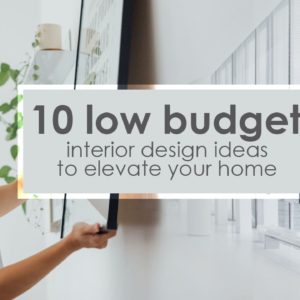
Low budget interior design that creates a well-put-out magazine-worthy home. Most people can’t afford to do the high-end interior décor. There are many ways to enhance and elevate your house in subtle ways without spending too much. Here are some easy and simple ways you can make your home more glamorous without denting your pockets.
Here are 10 low-budget interior design ideas for your home makeover.
Partitioning shelf is a great idea to gain division and privacy creatively. The shelves add additional storage space adding function as well as style the room. Books, vases, potted plants, models can be displayed and stored stylishly. It is a neat and tidy way to organize and display
Buying art can be expensive but art adds colour and beauty to the interior design. A simple and fun way to enhance the living room is doing a DIY art that you can later frame. Use the colours of the living room in the art to tie it all together and bring harmony to the space.
Upcycling furniture is a good way to reuse and reimagine old furniture. Adding funky mismatched-up cycled adds colour and life to space. It is environmentally friendly and budget-friendly. It can be done as an easy family DIY project over the weekend.
Mirrors are versatile and stylish. Adding mirrors to the wall mount is a good cheap way to enhance the interior design. Buying different shapes and sizes of mirrors and arranging them on the wall to give it an elegant stylish look.
Paper lampshades are cheap and convenient to use and buy. There are a lot of beautiful paper lampshades available in the market. The lamps are lightweight and easy to install. It adds attraction and unique touch to space.
Lifting the curtains all the way to the ceiling will give the room an illusion of added height. The high curtains give it a bigger and grandeur look. You can either opt to lift the existing curtain or add new curtains. Curtains are cheap and are readily available and in the market at different price points.
One easy way to remodel your kitchen without burning a hole in your pocket is by switching the colour of the kitchen cabinets. You can paint the cabinet to the colour of your choice and you can also replace the knobs of the cabinets to give it a fresher look. You can also do the same to your bedroom cabinets to change up your old bedroom to a new fresher one.
Under stair, shelves is a great storage idea. The otherwise left-out space can be used by creating a customized shelve space for storage and display. It is both stylish and functional.
Don’t be shy and add a bold coloured wall to your interior design. The bold coloured wall can be used as a backdrop and add accessories to the room that match the wall colour. You can also add texture or pattern to the wall. This can be either a DIY project or you can consult a professional for it.
Candles and flowers bring freshness and beauty to space. It can be arranged almost anywhere in the house. You can arrange flowers in the bathroom to give a fresh and expensive spa-like feel to it. It will also give a pleasant smell enhancing the whole experience.
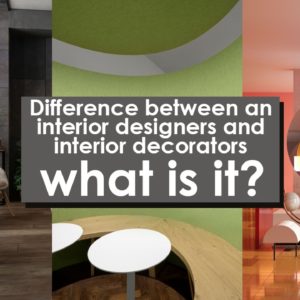
The difference between an interior designer and an interior decorator is not well known. Even though there are similarities between them, they are different careers. People often mistake interior decorators and interior designers. Here are some similarities and differences between interior designers and interior decorators.
Interior designers are mostly professionals with a degree or diploma in interior designing. There are different ways one can become an interior designer. Interior designers should how the architecture and the built of the space. They use a mixture of science and art to create a perfect interior design. They work alongside the architects to create functional and beautiful living spaces. The experts in the field of interior design must have a firm grasp on building construction. They strive to create optimal functioning spaces with cost-effective methods.
Interior decorators mainly focus on enhancing the aesthetics of the living space. As the word ‘decorate’ indicates they nicely decorate the given space. They may redo or rearrange the wallpapers, paint color, and furniture of the interior. Interior decorators do not have to hold any relevant degree. They are mostly people with good artistic creativity and a knack for décor. They work within the framework of the space and its functionality. To change the aesthetics of the space they make use of fabric, paint, furnishing, and accessories.
Both of them are hired by the owner, architect, or developer. Before they begin, interior designers meet with the client to understand how space will be utilized. Interior designers while creating a plan focus on things like building fire safety, accessibility, efficiency, and functionality. They also keep sound and acoustics in mind. Creating the plan for the walls and floors requires architectural base knowledge. They make use of science to create optimal results. The total budget is estimated during the planning phase
On the other hand interior decorators while planning and designing keep in mind only things of aesthetic value like flooring, furnishing, lighting, fixtures, accessories, fabric, paint, and art. Interior designers work on both commercial and residential levels while decorators largely work on the residential level.
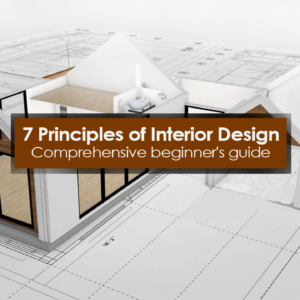
7 principles of interior design are widely accepted by everyone in the industry. It is tried and true recipe to create interior spaces that are functional and aesthetically pleasing at the same time. Like the golden ratio in architecture the 7 principles also enhance and elevate the interior design.
Let’s dive deeper and get to know all seven principles of interior design.
The first thing to keep in mind is balance. What is balance in terms of interior designing? It is referred to as “visual weight” distribution. “Visual weight” refers to how heavy or how light an object appears to the human eye. Large, solid, dark, or colorful seems heavier to the eye than small, thin, open, or light objects seem lighter to the eye.
A good way to ensure that the visual weight distribution is good is by dividing the space into 4 quadrants and each quadrant should contain roughly the same amount of furnishing.
Like the music, repetition helps in visual appeal too. Just as creating musical patterns creating a visual pattern is necessary for interior designing. It creates a space that is cohesive and gives a seamless moment to the eye to flow around the room. The element for repetition can be anything from texture, shape, pattern to finished materials.
Try to create a focal point. It can be something inbuilt like a fireplace or something that is deliberately placed in a way like a piece of art or furniture. Lay the design around the focal point such that it is the first thing someone will notice when entering the room.
To make sure the interior is not boring contrast and variety, to say the least, is a must. Additionally, contrast gives the space drama and variety adds diversity and personality. You can achieve it by pairing contrasting colors, shapes, and textures
Scale and proportion will ensure that objects in the room belong and relate to each other. Proportion refers to the size of one object concerning another while Scale refers to the size of objects within a space.
Unity and harmony ensure that everything goes with everything else in the room. It is achieved when the design and furniture follow the theme. Decorating accordingly with items that have common colors, patterns, shape, or style will help to achieve unity and harmony

Interior design course details on frequently asked questions are given below. Please refer to the below questions. for more details contact us at 0495 2722242
BSc interior designing is a three-year course that equips aspiring interior designers with the necessary skills needed for it. In the three years of the course, several core topics about Interior designing are addressed, practical’s an internship. Interior designing is not just artistic talent, the process of interior designing involves scientific, logical, and creative thinking.
Communication Skills
Basics of Interior Design
Environmental Studies
Cost Estimation
Construction Technology
Materials and Finishes
Colour Theory and Techniques
Design Theory
Materials and Finishes
Colour Theory and Techniques
Design Theory
Material Purchase
Furniture Design
Model Making
Design Technology
Drawing (Technical)
Design Practice
There are a variety of different job opportunities here is a list of few
Product Designer
Furniture Designer
User Experience Designer
Interior Designer
Set Designer
Interior Elements Advisor
Interior Space Consultant
Model Maker
Portfolio Designer
Blogger
Interior Decorators
Bathroom Designers
Universal Designers
Sustainable Designers
Industrial Designers
Professor of Interior Design
Exhibition Designer
Kitchen Designer
Healthcare Designer
Corporate Designer
Lighting Designer
Architectural Technologist
Production Designer.
BSc Interior design (by Barathiyar University)
Interior designing is a multi-faceted profession which includes numerous element that needs to work together.
First and foremost is research and analysis of the client’s goals. Sit with the client to understand their wants and needs also their likes and dislikes. Form schemas and plans with the help of two and three-dimensional design concepts that integrate knowledge, creativity, principles of interior design, and client needs. Then comes the selection process which includes finding furniture, fixtures, and equipment. Creating layout drawing, detailed product description, provision of contract documentation to facilitate pricing, procurement, and installation of furniture. Preparation of construction documents, consisting of plans, elevations, materials and finishes details and specifications, power and communications locations; reflected ceiling plans and lighting designs; and furniture layout. Collaborating and coordinating with various allied professions for plumping, electrical wiring, etc. Observing and reporting while the project is in progress till completion.

Multimedia and its applications are vast and varying . There are a plethora of definitions of the word multimedia. It is roughly defined as a computer-controlled integration of text, audio, video, animation, and any other media that is stored digitally, signified, and transmitted. Multimedia and its application are an integral part of day-to-day modern life.
Multimedia can be both linear and nonlinear. The direct active context that requires no navigation or interaction control is linear multimedia. Movies are a good example of linear multimedia. Non-linear content is also known as hypermedia content uses interactive navigation control. Games use non-linear content to provide user interface and navigation.
for multimedia and its applications different elements play a vital role.
The most basic and well-known form of multimedia is text. It is the foundation for word processing programs, it is still the fundamental form of information used widely in multimedia programs. Text can be customized according to size, font, and color. It is one type of application people use every day to communicate.
Audio is an effective multimedia application. Select types of information can only be conveyed only through sound. Audio sound helps strengthen the viewer’s consideration of the information and helps generate a positive impact more than any other medium of multimedia. The versatile nature helps capture the user’s attention and makes it more interesting.
An image is worth a thousand words’ true to this proverb still graphic image conveys the information across efficiently. images enhance the multimedia appeal.
Animation is essentially moving graphics images. An animation of someone performing a medical surgery is much easier to understand than text or images. Animations make it easier for the creator to express the information.
Full motion video adds to the multimedia application positively. Even though, the full-motion video is space consuming and lowering the video quality will affect the impact it creates. it is a very popular method of multimedia. It provides realism to the multimedia that most other elements can’t provide. There are several ways to compress the videos to reduce the bulk and storage space.
It provides a wide range of creative applications for information communication.
It caters to all types of people.
Most multimedia only require a one-time purchase of a device making it cost-effective in the long run.
It provides a more realistic approach to learning
Current culture integrates multimedia in all areas of life. Making it the most trending form of communication.
The deceives need electricity to operate. Most rural areas lack the basic requirement necessary for multimedia propagation.
It may take away from the important information due to its attention-grabbing nature.
Compared to traditional mediums of information multimedia production is costly.
Creating multimedia requires more time because of its creative nature.
Multimedia mastery requires a significant amount of time and energy because it is complex and involves a number of elements
Multimedia is vulnerable because the devices involved can be easily broken or tarnished. Additionally, most devices are not waterproof making them fragile. Some damages are repairable while others are not adding to global pollution.
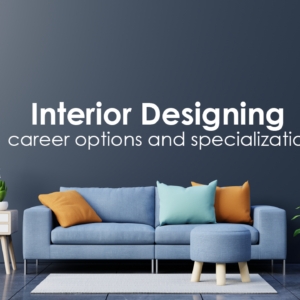
Interior designing career options seem to be not many but, it is not true. In India, there is a demand for more than 1 lakh interior designers in different for different specialization. The common misconception that interior designing as a career only entails the job of designing living spaces.
There are numerous interior designing career options for interior designing graduates. Below is a list of fun and creative job titles after graduation.
If you have a strong inclination towards tasteful furniture that enhances the commercial or personal living spaces this is the job for you! Your job is to create modern furniture that is both stylish and functional.
Most of the world is not aware of this job title. In fact, it is one of many jobs that are not well known to the public. The job is to create temporary fixtures and display stand for art galleries, museums, large public exhibitions, conferences, trade show, and businesses.
Demand for a stylish, personalized, and functional kitchen for commercial and personal spaces. Hence, the job entitles creating, updating, and remodeling the kitchen area. You will have to regularly meet with the clients to discuss building materials, themes, room layout, colors, and patterns and embody their dreams into reality.
This is one of the fanciest and high fame job titles. Production designers are responsible for the visual concepts of television, theatre or film sets. They are in charge of creating a set with props, location, and graphics, lighting, costume, and camera angle therefore, the job is a very demanding high reward type of career. Also, every set and production is unique and each location/scene has its challenges.
The job is to provide building designing service, train in architectural technology and builds technical design and construction. They work alongside architects to produce compelling unique commercial spaces.
Tricky but well rewarding job. Universal designs are designs that take into consideration of people with a wide range of difficulties and accommodate all people. Universal designs can help people with disabilities to access and utilize public spaces that would otherwise be difficult to use.

Interior design Eligibility and course fee frequently asked questions are given below. Please refer to it for all things related to interior design Eligibility and course fee in case of admission queries regarding it.
You can register online at https://www.vismayamvfx.com/ or call at 0494 2722242. Once you have registered a counselor will be assigned to you to explain in detail the course structure and fee details.
No, BSc Interior design is a degree level course you must graduate 12th or diploma equivalent to it.
Yes, a candidate with a 12th or diploma in any stream is eligible to apply for BSc Interior design. There is no issue regarding the stream or subjects taken.
A good average estimate for a BSc Interior design course is between 60,000 to 1, 00000 Rupees. Interior design is a hands-on course in which the institute has to provide various applications, laboratories, workshops, and expert sessions.
Yes, you can pursue a degree after completing a diploma in Interior design. Furthermore, you can do lateral entry and enter the second year directly.
All programs of the college are non-residential. Regardless of that, there is limitless hostel accommodation available for the newcomers in the surrounding area. As the College is located in the heart of Kozhikode city. Apart from this, there are numerous homestay facilities nearby the campus. Students can choose the accommodation style they prefer.
Yes, there are a few hostels and homestays that hosted our alumni and have good facilities. The counselor will give you a list of them. You can go and check it out and pick a hostel that is desirable and affordable for you.
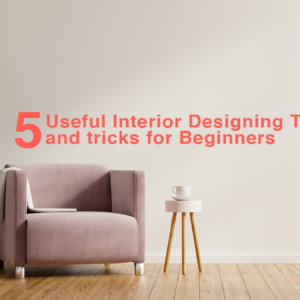
These interior designing tips and tricks can help you redesign your living space. Here are some interior designing tips that will guide you to accomplish that. A well-made interior design is a statement. It reflects your personal style and taste. As an amateur decorating, furnishing, lighting, and accessorizing may seem hard and confusing. But if you have a good imagination and a style on your mind the task can be accomplished with the help of these tips
If you are someone with a zest for redecorating and designing interior spaces consider taking up interior designing as a career. There are many degrees, diplomas, and certification courses available. Interior designing as a career offers a wide variety of jobs.
Some of the major interior designing tips to keep in mind are
Before trying to redo your living space make sure to pick a style and stick to it. To make the interior more appealing stick to a style and make sure you fit your furniture, accessories, art, wallpaper, lighting, etc fit with the theme.
Lighting is quintessential to any space. One way to make sure the room has good lighting is by observing how natural sunlight falls in the place. If there are places where there is no or weak natural lighting consider placing lights there. Go with lighting that fits your preferred interior style.
One tip is not to purchase furniture that comes in a set. A little bit of variation will add more soul to space. Don’t overspend on the furniture that will leave you with little money for the rest of the things.
In small spaces go bold in colour and style in terms of the wall colour. Make sure not to pick paint before you settle on a style. Only choose a colour when the theme is finalized.
A good way to elevate the floor without redoing the entire floor is by adding rugs and carpets that bring life by adding colour, texture, and warmth to the place. Keep in mind to add cheap and durable rugs in high use/traffic common areas and luxuries more expensive carpets/ rugs
These might seem like unnecessary spending but, trust us accent piece and accessories goes a long way. For example, if you are a big beach fan incorporate elements from it like seashells in a jar for display.
If done right it can add a personal touch without being overwhelming. It ties everything together creating harmony among different elements.
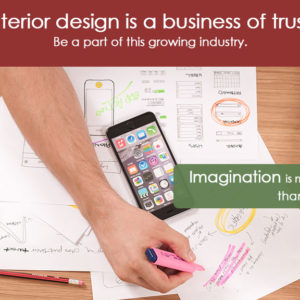
BSc Interior Designing syllabus and eligibility vary across various universities but the core subject and minimum eligibility are almost homogeneous across all universities. After completing 12th-grade students are often confused when choosing a career path. Questions like which stream to pick, which careers will be optimal plague their minds. If you are artistically gifted and have a keen eye to furnish and create aesthetically pleasing environments you might have already thought of interior designing as a career path. given below are the detailed BSc Interior designing syllabus and eligibility of Bharathiar University.
Minimum eligibility for BSc Interior designing is 12th graduation. also, lateral entry to second-year is possible for students who completed a one-year diploma in interior design.
The university follows yearly examination as opposed to semester-wise that most other university structure and courses.
FIRST YEAR
|
Year |
Part |
Subject and paper |
University Exam. | |||
| Duration in Hours | Max. Marks | |||||
|
First |
I | Language | Paper 1 | Language-I (Optional language) | 3 | 100 |
| II | English | Paper 1 | English (Communication skills) | 3 | 100 | |
|
III |
Core |
Practical 1 | Interior Design – I | 3 | 100 | |
| Practical 2 | Interior Graphics – I | 3 | 100 | |||
| Theory 1 | Materials of Interiors – I | 3 | 75 | |||
| Practical 3 | Presentation Technique | 3 | 75 | |||
| 3 Theory and 3 Practical | Total Marks | 550 | ||||
SCHEME OF EXAMINATIONS
|
Year |
Part |
Subject and paper |
University Exam. | |||
| Duration in Hours | Max. Marks | |||||
|
second |
III |
core |
Practical 4 | Interior Design – II | 3 | 100 |
| Practical 5 | Interior Graphics – II | 3 | 100 | |||
| Practical 6 | Furniture Design | 3 | 100 | |||
| Theory 2 | Materials of Interiors – II | 3 | 75 | |||
| Practical 7 | Computer Application in Design – I | 3 | 100 | |||
| Theory 3 | Estimation and Costing in Interiors | 3 | 75 | |||
| 2 Theory and 4 Practical | Total Marks | 550 | ||||
SCHEME OF EXAMINATIONS
|
Year |
Part |
Subject and paper |
University Exam. | |||
| Duration in Hours | Max. Marks | |||||
|
third |
III |
core |
100 | Interior Design – III | 3 | 100 |
| 75 | Landscape and Environmental
Design |
3 | 100 | |||
| 75 | Professional Practice and
Management |
3 | 100 | |||
| 100 | Scheme Detailing (Working
Drawing) |
3 | 75 | |||
| 100 | Computer Application in Design – II | 3 | 100 | |||
| 150 | Office Training (Internship) | 3 | 75 | |||
| 2 Theory, 3 Practical,
1 Project |
Total Marks | 600 | ||||
The three-year BSc interior designing focus on various core aspects of interior designing. There are several job opportunities waiting for students who graduate. The rise in urbanization and population made sustainable interior spaces in high demand.
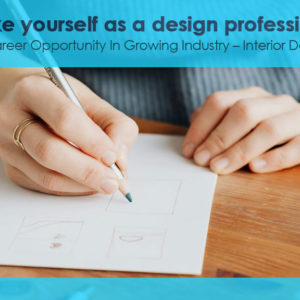
Best interior designing colleges can be hard to choose, researching and gathering details about them need great precision. For some of us creating an aesthetic landscape is a passion but, passion alone can’t make a career. To transform a passion into a profession needs a great deal of planning also a great deal of creativity.
Interior designing is an artistic job. There should be a streak of imagination to transform empty spaces and bland walls into tasteful lively spaces. Here are 3 things to keep in mind while choosing the best interior design college to kick start your career in the industry.
One of the criteria that all the best interior design colleges have in common is reputation also these colleges are often competitive in terms of admission. A college with a good reputation will do wonders for your career. Make sure to choose an option with strong alumni who went on to be successful. There are many colleges with a good reputation but don’t let it fool you, be specific and confirm that the college has a good reputation for the interior designing department.
How relevant is the course offered? Make sure to do your research thoroughly. A few ways to narrow your options are to choose a college that provides an updated syllabus for learning. Make sure the software used is relevant in the real-world working environment.
How valuable your is degree certificate? There are hundreds of degrees and diplomas available to pursue for varying durations of time with different syllabus and projects. Ensure that major companies in the industry accept and recognizes the degree college provides.
Vismayam College of arts and media is one of the best interior designing colleges in Calicut it is the result of reputation that is stemmed from more than a decade of successful output. Get a detailed syllabus and course structure to make your rightful choice.
Suggested readings for you..

When it comes to selecting a degree for further studies, it all comes down to what you want to be. And these days, professional courses have an edge over regular courses. Even though there are many branches of studies that you can pursue, a few stand out for the creative bunch. One such course is interior design graduate degree.
But before knowing more about the course, you should know the advantages of pursuing a professional degree. Apart from ensuring a job, a professional degree has the following advantages:
Now that you know what a professional degree is about, let us move on to interior design graduate degree.
It basically means a three- year duration course that covers all aspects of interior designing. At the end of three years, if you successfully complete all the requirements, you earn your degree certificate. Usually, interior design graduate degree course is a stream under B.A(Bachelor of Arts) or B.Sc (Bachelor of Science) program.
The three- year duration covers every topic under the sun, in interior design. An optimum interior design graduate degree program contains course contents spread over three years or six semesters. With university recognition and UGC approval, this course gives you a huge advantage in terms of job and career. Not only is it ideal for creative brains, but it is also a highly inclusive branch of studies. Since interiors have a lot of elements going on, it is imperative to study and be familiar with everything.
For that matter, a typical interior design graduate degree program generally teaches you the following:
In order to successfully come up with a design, you need to be familiar with design development. Here comes learning about fundamentals of design, or Design Basics. Before you commence with purposeful design, know how it develops to fulfill a purpose. With this, you discover the links between design, nature, lifestyle, functions and objects. Also, you gain understanding about the different elements and principles that a designer follows while designing.
Here, the aim is to impart the drawing skills that enable you to sketch your designs. Be it an object, a furniture or an interior or even a building, this course trains you to achieve the output. Even though there are many software platforms that make your drawing jobs easy, yet, nothing beats the design aptitude you develop with this skill.
If you want to implement your designs, your team should also be able to understand them quite clearly. And it is the reason why you will learn technical drawing. Through proper drafting, you will convert your designs into measured and scale drawings, with details and descriptions. This thorough explanation will not leave any space for error. With technical drawings, your abstracts will turn into objectives, with accurate description of each element in the interior.
To achieve real-time interior, you need proper materials. If you have observed closely, materials and design go hand- in hand. Not only does a material influence the quality, durability and life of a design, but it also dictates the budget. Even when you feel that a luxurious look is out of your budget’s reach, materials come to your rescue and offer you with practical substitutes. Since materials form the link between design and budget, you need to have a good deal of knowledge about it.
These days, designers and architects use presentation drawings to show the clients what their designs would look like. With software such as AutoCad, 3DS Max, Photoshop, and V Ray, you can produce realistic images, just like photographs. Not only the designs, but you can actually create real material texture, finish and light effects. Hence, a standard interior design graduate degree program definitely trains you well with these tools.
When you decide to pursue interior design as a career, it is always better to know what you are about to learn. With so many things to look forward to, there are obviously a lot of workshops and seminars time and again. Along with these, you learn the value of inculcating professional etiquette as you grow into a designer. And therefore, pay attention to the institute you will select to learn the art and craft of design.
Anybody can be a good designer- it is simply about getting all your basics just right!

When you occupy any space, you naturally want it to adapt to your needs. If the said space happens to be your home, then you want both comfort and beauty to sing along. But if it is your office, you desire a productive surrounding. Basically, no matter what the space is, you want it to match its purpose beautifully. And this very desire pushes you to seek interior design solution.
Be it any space, the first step is to identify the exact nature of problem, so that you find appropriate solution for it. If we talk about residences, then the general issues are quite different from those in an office or a school. Hence, let us enlist the design problems that may occur across different spaces, eventually affecting the end user.
The common issues that people seek interior design solutions for, are:
1. Lot of Negative space:
Often, people fear congestion in their small homes. So, they stick to bare minimums, resulting in a lot of negative space. Another factor is, poor furniture layout. At times, certain places may be overly dense, while certain spots of the space may be lying unnecessarily empty. This space becomes a problem when it hinders balance or utility.
This happens in the case of furniture. Often, while selecting furniture, the user pays more importance to the ‘looks’ than the’feels’. And after some time, the furniture becomes a liability. Another frequent issue is when clients shop on a tight budget and have only limited choices, most of which do not meet all the points on clients’ wish lists. Unfortunately, that results in compromised comfort during the furniture lifespan, generally spanning years. Another aspect is the passage spaces. Without taking consideration of minimum passage spaces, you may end up with clustered elements in spots.
This is quite the reverse of our first problem. Sometimes, clients get so excited that they go on a shopping spree- purchasing anything and everything that comes their way. Then, the user randomly scatters these across the room, citing space issues. Here their excuse for interior design solutions is, the adjustment is temporary and they will rearrange soon. That ‘soon’ never sees the light of the day!
When people decide to go fancy, they rarely spare a thought about lighting and ventilation. Some people fill a space with excessive partitions and unintentionally block air points. Not only does it increase initial investment into building services, but also proves to be costly in the long run. Also, when the world is talking about sustainability and going green, does it make sense to decide on wasting such resources?
For these common issues, corresponding interior design solution provides you with the right step to take. However, even these steps need careful treading, which becomes easier if you hire a professional to do it. Instead of long term regrets, it makes better sense to invest in a sensible interior designer who can add oodles of value, beauty and above all, comfort, to the place that you love to call your own.

When you study interior design, you eventually develop an idea about what you want to do afterwards. Which means, out of the many vacancies in the market, you see yourself chasing one interior design job or more, depending on your interest.
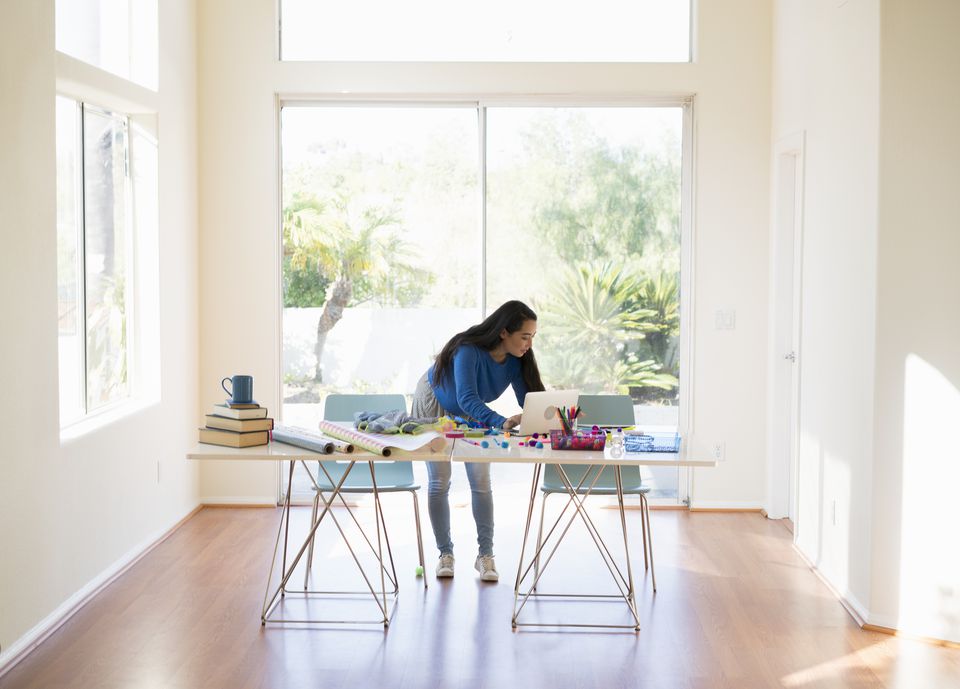
And why not? But before you decide your ideal interior design job, you should know what are the different jobs on offer for freshers. Yes, in this field, the jobs differ according to the experience you gain.
To begin with your career, you may go for something that works for your technical skills. However, after a period of time, your dream job improves your overall design skills, along with income, of course! Let us see what we have for you when you pass out as a fresher, ready to take on the world of design.
When you come across this vacancy, know that the firm wants someone to look over the site works. Which basically means, daily staff regulation, material inventory and so on. This is one interior design job that needs multitasking.
You should be able to read the working drawings, instruct the staff on-site, adjust to site requirements and much more. Also, you should be able to clarify doubts of workers, clients and sync between different team members in a project.
A site supervisor’s daily logs are quite important in future arbitration procedures. Now, what do you gain out of this interior design job?
Experience! The experience to handle site and emergency situations. And the courage to indulge in freelancing- since you learn how to handle workers and the work!
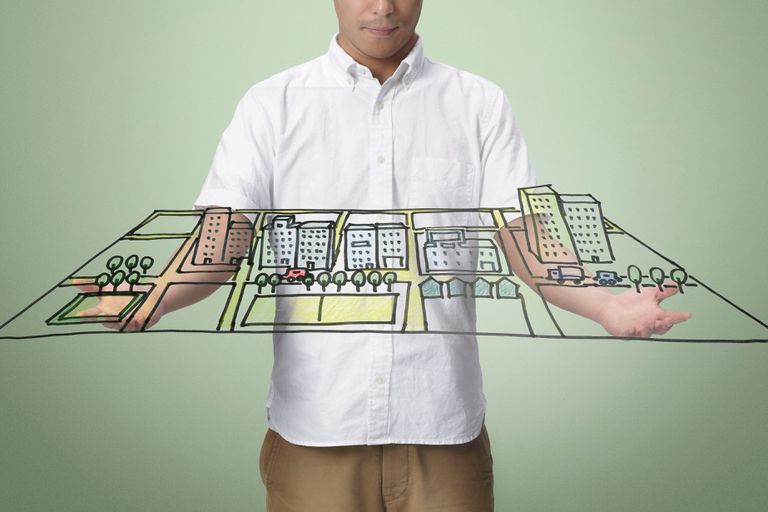
AutoCad software has a big role in today’s design industry. And That is because all the working drawings are made on this platform. Obviously, for a firm with multiple projects, there is always a constant need of proficient draftsmen. So, it is one ever trending interior design job for freshers.
As a draftsman, you can improve skills in Auto CAD, improve your drafting and planning skills and most of all, learn good designing from senior designers’ plans. And don’t worry, nobody is going to pile your desk with pending projects- you get your part of training in most firms!
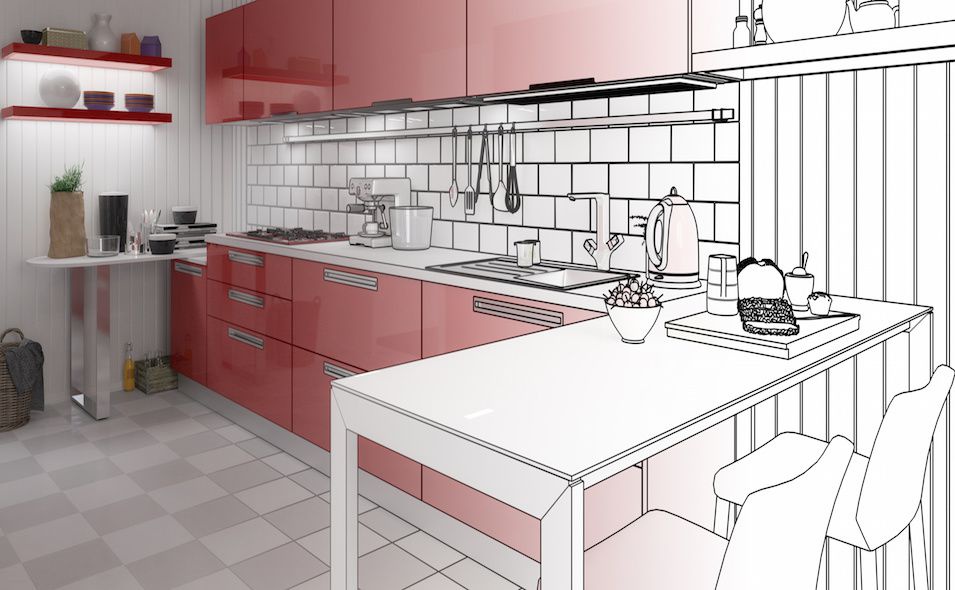
Have you ever come across the picture-perfect interior images in magazines? many of them are software renders. And that is because such realistic images are a part of presentation drawings. These days, clients need to know how their spaces will look like before the works begin.
And it is here that you shine as a 3D visualizer. As a 3D visualizer, you are going to read the drafted plan and develop it into a full-fledged virtual model. And then you capture the best images from nooks and corners of your virtual model. So, is it as easy as it sounds? Well, the ease factor depends on your basic knowledge. But is it fun? Yes, it is!
Not only do you significantly enhance your 3D rendering skills, but you also end up learning many new software programs available for the same purpose. And since you are a fresher, even a decent rendering can may you land this interior design job!
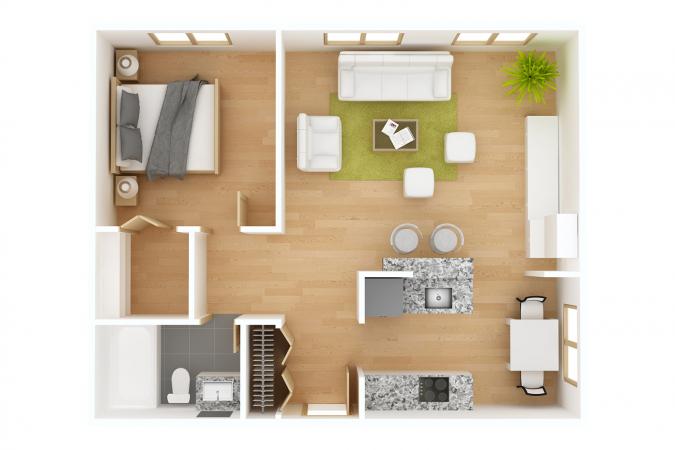
Also, there are many software in the market, such as 3DSMax, Google SketchUp, Revit etc. That means, different firms opt for different combinations and have different requirements.
Since interior design is a professional course, you need to create a good portfolio before you venture into the academic field. And if you have done some freelancing along with your degree, in both residential and commercial design projects, you can try a hand at it.
But, only if you find teaching passionate! As a teaching assistant, you may take certain topics from the syllabus as compared to a whole subject. Of course, you need to be in touch with the field and keep updating yourself, when you decide teaching is your call.
As you gain experience, you can climb your way through the positions of Senior designer, Associate designer, product designer, Design consultant, Set designer and so on. Take any interior designer job, at the end of the day, it comes down to your passion!

If you have a creative side, then you can actually explore your potential. Even though art has many forms, making a career out of one is equally exciting! And with Interior Design, it only gets better. But, how do you decide the best interior design college for you?
Don’t worry, this blog takes you through a few points that you may look up before zeroing down to a college of your choice.
When it comes to making a checklist about picking a college of your choice, it absolutely makes sense to consider many factors individually and together. One particular college may be average in one aspect but strong in another. So, after considering everything, go for the one that suits you the best.
Here are a few pointers that will help you with shortlisting a good interior design college.
When you wish to study a subject of your choice, it is only natural that you get guidance from someone who masters it. Before you join a college, it makes sense to know the feedback and quality of the teaching faculty. An interior design college makes sure to enrol productive people on board. And their quality speaks in terms of students’ feedbacks and years of experience in teaching.
After all, teaching is not everybody’s forte!
Take any educational institute. For all its programs, the institute should fulfil certain official requirements that meet course standards and make students eligible for placements. If it is a degree program, the interior design college should affiliate it with a recognized university.
However, in the case of Diploma courses, a college may or may not affiliate itself to a university. Rather, many established and leading colleges run their own Diploma courses. After all, they have years of expertise to back these.
These are some very important aspects of any creative course- seminars, workshops and similar activities. For any interior design college, these activities form the very offerings for the professional grooming of students. When we talk of activities, we are talking about involving students in all possible art episodes around the institute, say an arts fest or a creative meet.
With workshops, the college demonstrates the importance of learning by doing. And seminars/presentations open up a lot of opportunities for the students. More so, when you have industry stalwarts engaging in meaningful activities and conversations with students.
Since interior design is a professional course, many interior design colleges tend to have a tie-up with architecture and design firms for their graduates/diploma- holders. Now the important point to consider here is- the placement record of students.
Instead of mere tie-ups, a good interior design college has a good placement record. In fact, the placement cells of such colleges start training their outgoing batches through various sessions and workshops, for a quality career launch.
After all, a career support right when you graduate gives you a sense of direction and a path to continue on to.
Interior designers know the value of teamwork. Be it on the site, over the drafting table or in the office, teamwork makes or breaks a project. Here, you not only need to have the knowledge, but also professional and time management skills. While your portfolio may be excellent, it will not cover up for your lack of interview skills. Even if you can converse fluently, you cannot substitute drafting skills with it.
And that is why it is important to keep a track of what all your favourite college offers in terms of real-life skills. There are many finer details that make a big picture perfect. But without those details, the same picture may turn out to be a less- than- a mediocre piece of art. And the same concept applies to your career also. No matter how much you learn, without the right ways of expressions and skills, all these may fall flat.
A good interior design college can be the very factor that may add great value to your career. Hence, whenever you choose, choose it wisely.

Interior Designer as a career is quite recent, but the job? Well, people have been practicing it since centuries! While the basic concept was quite vague, knowingly or unknowingly, it found a way into spaces. And that’s how we know the profession as it is today.
However, where does an interior designer fit in the grand scheme of things?
In fact, it is this point that can give answer to many questions in design project. So, let us go through the tasks of an interior designer, one by one.
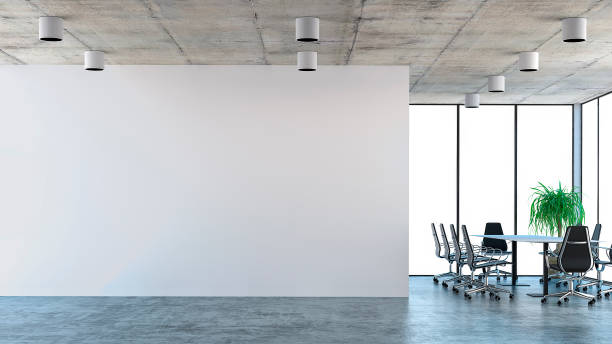
Yes, we need people to design our spaces. Be it your house or your office, any space has its own set of requirements. While the function of a space is important, however, there are many other factors as well. Age of the user, time of usage, climate, safety considerations, building services etc are other crucial points for an optimum space.
That is why you need to consult an interior designer. Somebody who is fluent with all of the above, even the technical aspects.
Additionally, with a designer, you also have the advantage of expressing your concerns and finding solutions.

These days, nothing is cheap, not even designing and construction. But, even though you pay designing fees, you end up saving a lot, lot more when you avoid bad designing.
So, what do we mean by bad designing? For example, poor furniture design that leads to chronic fatigue. Or, poor planning of ventilation and lighting- that worsens eyesight and respiratory health, etc.
And with a designer, not only do you save money on corrective measures with bad designing, but also on the resulting medical bills!

Not only does an interior designer know what to do, but she also knows how to do it. Instead of random construction processes, Interior designers follow the most suitable professional way to go about a project.
Well, they literally learn something called DESIGN PROCESS in their design curriculum. Not only does that help the designer to plan better, but it also makes the whole designing episode a lot more stress-free. As a result, the work flow is smooth, there are answerable people around and your stress level is almost nil!
With interior design projects, regulations come into play right from the conceptual stage. So, there is this chain of tasks that the designer follows to regulate each part of your project.
Now, that is one good benefit of having an interior designer around!

When you plan a structure, you also plan its budget. And even though it is easy on paper, but when it comes to real site- time, things often go out of hands!
And that is where an interior designer works her charm. Instead of straying away, she ,manages each penny, tallies all expenses and quite often, bags you the best deals!
How? Well, regular projects means regular material demand and supply. And that means business with a regular bunch of traders, which often translates to better prices. Isn’t that one amazing add- on?!

If you skip supervision, then literally, you destroy an interior! And since interior designers understand its importance, they never compromise over it.
Even though the papers may describe everything perfectly, still, you may often come across poor quality of workers or workmanship. And it is here that the designer saves your day! There are many things that can go absolutely wrong in a site. And the designer makes sure nothing goes against your plans.
Be it material inventory, labor issue, temporary setbacks or delays, an interior designer takes care of each and everything. They explain, correct, rectify and even repair, if that need arises.

Here we are not talking about aesthetics. That is obviously on the list. But with interior designers, you often get that something more out of them for your space.
Yes, designers love challenges and they love providing solutions all the more. So For some, they may come up with a multipurpose furniture. For others, it may be clever lighting. Yet others may be renovating their furniture.
Utility areas, landscaping, soft furnishings… basically, it could be anything that you can modify and enhance its value. Ultimately, what it does is, adding oodles to the space quality.
Basically, interior designer is the link between a structure and its user. With knowledge and experience, an interior designer works up perfection!

When you learn interior design, you often dream of setting up your own interior design office. And since the era of start-ups is here, you should definitely give it a try!
But before you jump into the bandwagon, don’t you need a checklist? Not only does it help you in achieving your goal realistically- but it also helps you to set up an ideal interior design office.
Once you complete your degree/diploma program, all you need is some fair amount of experience. After working on different projects, you will develop an idea about your style of work. And then, with the following points in place, you are absolutely good to go!

Before you begin your own firm, you need to do some ground work. For example, to understand an organization and its hierarchy, you need to get into one. Also, how an office works- the staff and the departments, layouts and many other aspects.
And that is why gathering experience is important. Not only does it familiarize you with the ways of an office, but it also helps you with finding your way of doing things in your office. Plus, it helps you to prioritize. To allocate the correct share of time and money, according to your priority list.
Add to it, the benefit of networking with the industry field experts. As a beginner, it comes handy for sure!

Any type of start-up requires investment. If you look closely at the picture, there are many expenses in a firm. Be it office space, infrastructure, employees or stationary, you need a lot of money.
And then there are the initial hiccups of beginning with a new venture. In any scenario, you need to have a financial back up of the next six months. Apart from your interior design office rent, staff and other overheads, you need to have some money for emergency personal situations.
So, what do you do about it? The most sensible thing would be- planning. You need to indulge in financial planning. The bare minimum would be starting a savings account. But these days there are many other savings options that may reap good returns after a considerable period of time.
Remember, it is not how much you earn, but how you spend, that decides how rich you are!

The reason of Networking is simple- you want people to know about what you do! For any interior design office, networking, especially in its initial days, lays the foundation of its future. More so, when you start at a very basic level.
You see, people should know that you exist. Along with the quality of your works, they should also know where you stand as a designer. If you look around, all social media platforms primarily carry out the function of networking.
Now, networking, at times, may prove to be expensive. But the advantages are huge. Not only do you make connections with the industry insiders, but it also opens a Pandora’s Box of opportunities for you. In a business circle, mere a mention of your new firm may ring bells for your business!
Nowadays, there are many social media platforms that support new businesses with low cost factors. Your interior design office absolutely deserves all the hype out there. After all, you invest your precious productive time and money into it!

As such, running an office is a challenge by itself. But it becomes all the more difficult when you don’t have experienced, or even, affluent people with you.
Yes, experience may come across as expensive. For a new interior design office, it may also prove to be challenging. But, experienced staff know what to do and how to do it better. Even keeping them at supervisory posts can do wonders for your business.
And when we talk about talented and hardworking freshers, never say no to them! Along with a fresh approach, they are always ready and ever enthusiastic! Yes, they make an interesting pair with experienced employees.
Employees are the back bone of the company. And your office atmosphere decides your future. Instead of hiring not- so- competent people for the price of peanuts, spend a bit more and recruit adequately skilled staff.

Though marketing techniques may differ from one to another, but their end goal is the same- landing business. For an interior design office, marketing ways go through a lot many mediums. Apart from the regular tools like a visiting card, there are many other options.
For example, advertising in a design magazine, sponsoring a design expo, associating with architecture events, hosting design related events, etc.- all these are quite useful.
However, before you go with any marketing technique, you need to decide your target audience and the benefits of doing it, over others.
Owning an interior design office is a dream that many designers want to turn into their reality. Remember, it is easy to begin something, but it takes a lot of work to maintain its momentum!
Phone: 0495 272 2242